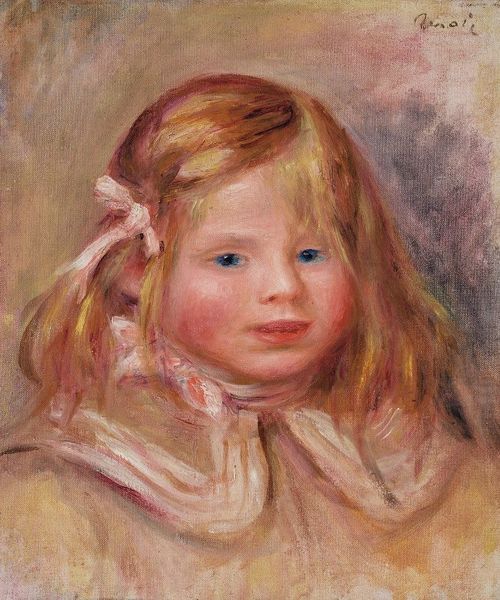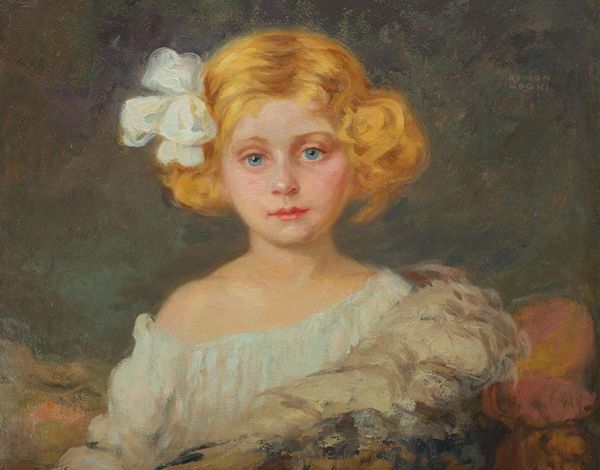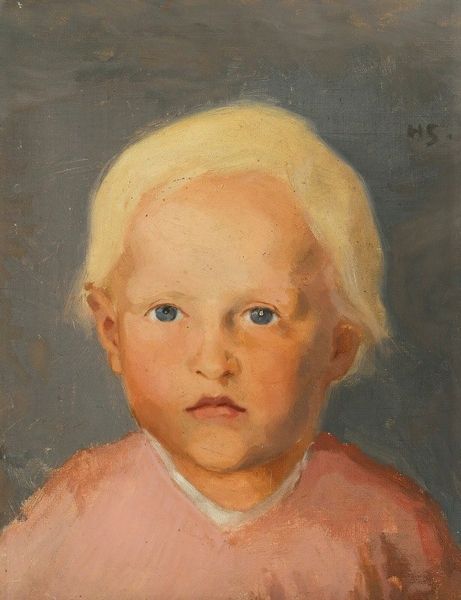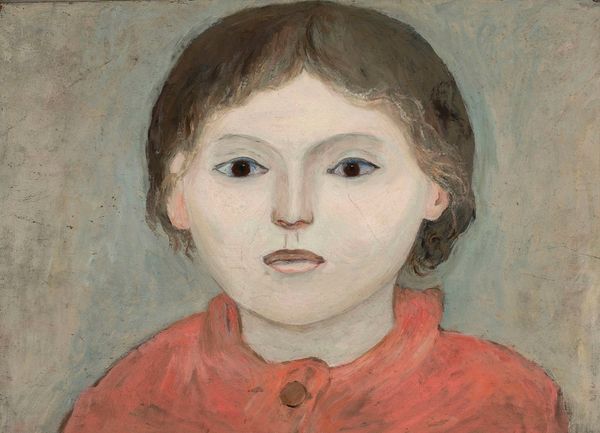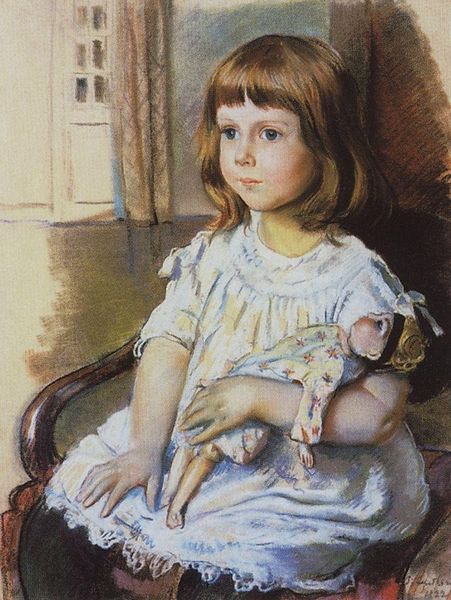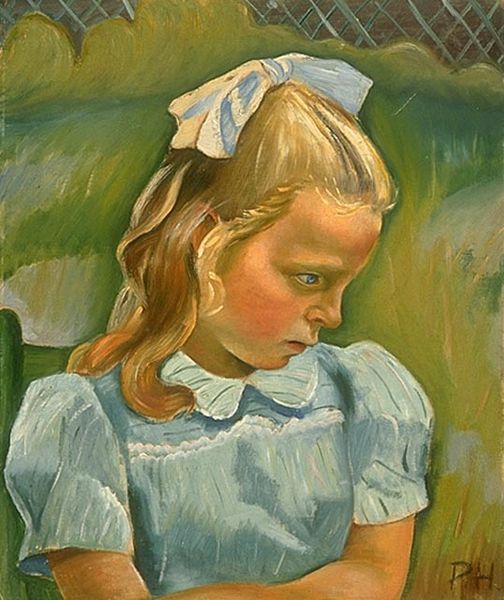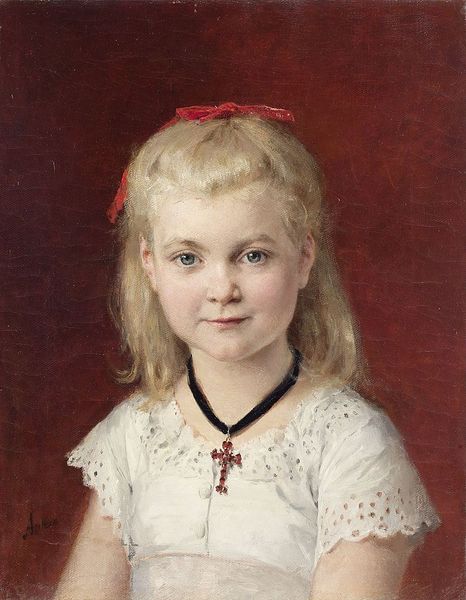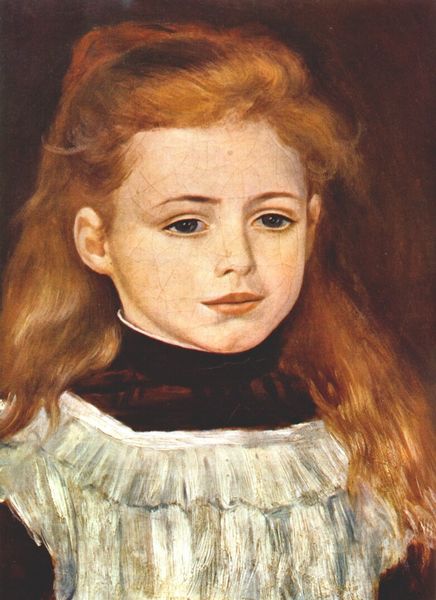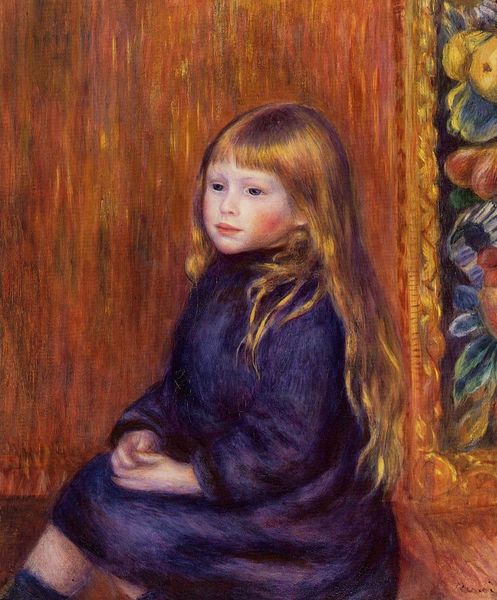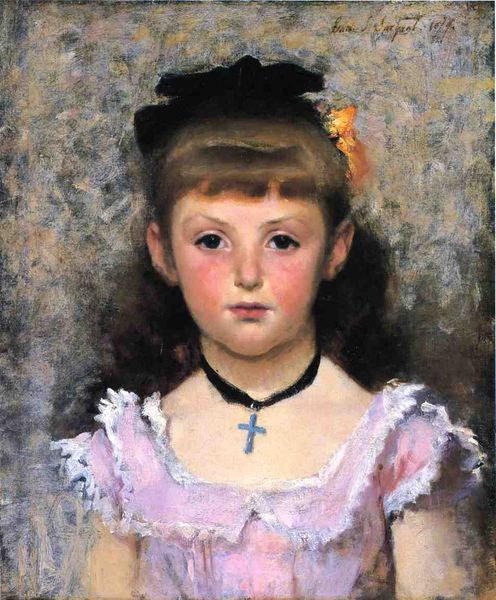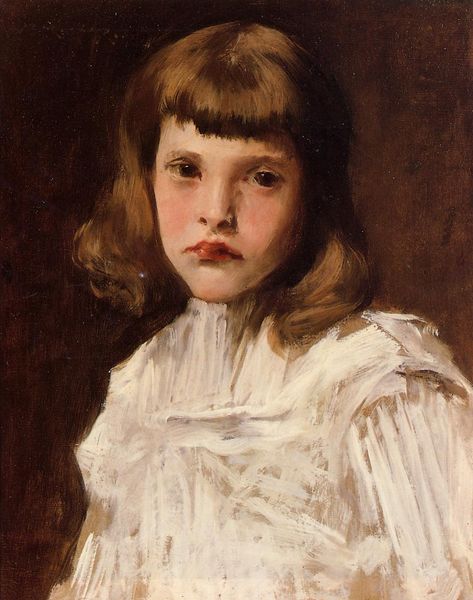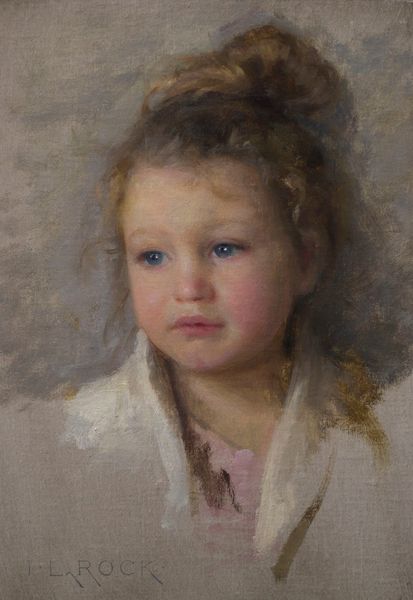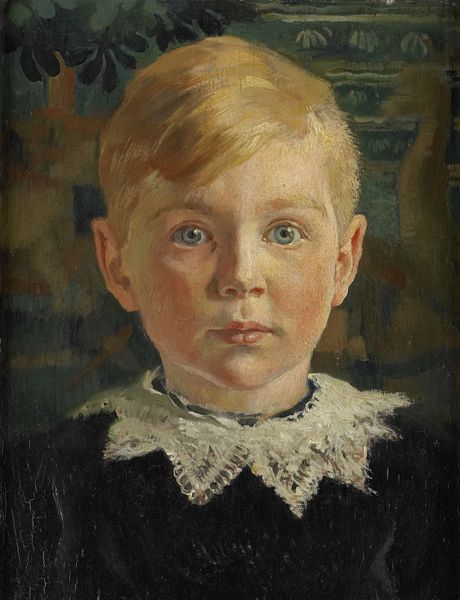
watercolor
#
portrait
#
art-nouveau
#
oil painting
#
watercolor
#
symbolism
#
genre-painting
Copyright: Public domain
Curator: What a striking portrait. Gerda Wegener painted this watercolor, titled "Portrait of a Girl," in 1904. Its delicate lines and soft colors immediately draw the eye. Editor: Yes, she’s got this almost ethereal, sad look about her. The limited palette adds to that sense of melancholy, a whisper of a feeling rather than an explosion. It feels restrained. Curator: I think that sense of restraint speaks volumes about the societal expectations placed on young women at the time. It's 1904. Wegener, even at this stage of her career, would have been very aware of the confined roles prescribed to women and their limited visibility and expression within the patriarchal structures of the early 20th century. Her choice to depict the girl with this almost stoic expression… It hints at that struggle. Editor: It does. And it reminds me of so many other portraits throughout history where young girls are portrayed almost like porcelain dolls, emphasizing innocence. Her eyes, that blue repeated in the dress and bow, suggest purity but perhaps also sadness. What cultural messages were sent to young girls through portraits such as these? Curator: Precisely. What norms of behavior were promoted or critiqued through painting a very particular vision of girlhood? The seemingly gentle composition, the child as subject, reinforces rather than challenges those notions of a fragile, quiescent feminine ideal, despite perhaps its subversive suggestion of sadness as you pointed out. It shows the art nouveau style and how even such artworks that display 'beauty' are still marked and shaped by their sociopolitical context. Editor: But there's also something enduring about those symbols: the color blue, the bow, even the soft, flowing hair. They are archetypes of girlhood, but archetypes we can re-examine, reinterpret, and see the value in, despite any embedded messages that disempower women. Perhaps those symbols offer strength? Curator: That's such an important point. Art never exists in a vacuum, but how we receive, interpret and negotiate what is visually communicated changes as cultures evolve and we challenge preconceived gender roles. The cultural weight a blue ribbon can carry across time is heavy. Editor: It’s definitely a piece that keeps talking even if softly. Curator: Indeed, and reveals the ways in which portraits work to enforce, even while subverting, the restrictive sociohistorical and gendered status quo.
Comments
No comments
Be the first to comment and join the conversation on the ultimate creative platform.
